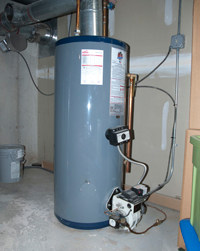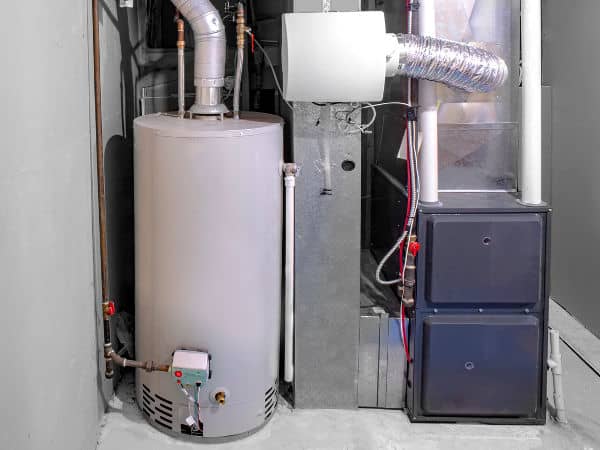Steps on How to Maintain Your Home's Hot Water System Properly
Steps on How to Maintain Your Home's Hot Water System Properly
Blog Article
Just how do you really feel in regards to Tips For Maintaining Your Hot Water Heater?

Warm water is crucial for daily convenience, whether it's for a revitalizing shower or washing dishes. To ensure your hot water system runs efficiently and lasts much longer, regular maintenance is essential. This write-up provides sensible suggestions and understandings on how to keep your home's warm water system to avoid disturbances and expensive repairs.
Intro
Preserving your home's warm water system might appear daunting, yet with a few easy actions, you can ensure it runs smoothly for years to come. This overview covers everything from understanding your warm water system to do it yourself upkeep ideas and understanding when to hire professional assistance.
Relevance of Preserving Your Warm Water System
Routine upkeep not just extends the lifespan of your hot water system however additionally ensures it operates successfully. Neglecting maintenance can bring about reduced effectiveness, greater energy expenses, and even early failure of the system.
Indicators Your Hot Water System Needs Upkeep
Recognizing when your hot water system requires focus can stop significant problems. Keep an eye out for indications such as irregular water temperature level, odd noises from the heating system, or corroded water.
Flushing the Hot Water Heater
Flushing your water heater removes debris accumulation, improving effectiveness and lengthening its life.
Checking and Changing Anode Rods
Anode poles avoid deterioration inside the tank. Evaluating and replacing them when worn is crucial.
Facility Concerns Calling For Expert Help
Examples consist of major leakages, electric troubles, or if your water heater is consistently underperforming.
Regular Professional Maintenance Perks
Professional maintenance can include complete assessments, tune-ups, and making certain conformity with safety and security requirements.
Inspecting and Adjusting Temperature Setups
Readjusting the temperature level settings guarantees optimal efficiency and security.
DIY Tips for Upkeep
You can do a number of maintenance jobs on your own to keep your hot water system in top condition.
Looking for Leakages
Regularly inspect pipes and connections for leakages, as these can lead to water damage and higher expenses.
Comprehending Your Warm Water System
Before diving right into maintenance jobs, it's valuable to understand the standard elements of your warm water system. Commonly, this includes the hot water heater itself, pipes, anode poles, and temperature controls.
Month-to-month Upkeep Tasks
Regular month-to-month checks can help catch small problems before they rise.
Checking Pressure Alleviation Valves
Examining the stress relief valve guarantees it operates correctly and protects against excessive stress build-up.
Insulating Pipelines
Insulating hot water pipelines reduces warm loss and can conserve power.
When to Call a Specialist
While DIY upkeep is beneficial, some problems call for professional know-how.
Final thought
Normal upkeep of your home's hot water system is necessary for performance, longevity, and expense financial savings. By complying with these ideas and recognizing when to seek expert assistance, you can make certain a dependable supply of hot water without unexpected disruptions.
Water Heater Maintenance: The Basics
Maintaining your water heater will ensure it operates efficiently and has a longer lifespan. Neglecting regular maintenance can lead to costly repairs and an even bigger chunk of your savings if you have to replace it sooner than necessary. But there’s good news: Most water heater maintenance tasks are relatively simple and easy for homeowners with basic DIY skills.
Flush the Water Heater
Over time, sediment and minerals can build up in the tank, reducing its efficiency and potentially causing damage. To flush the tank, turn off the power or gas supply, attach a hose to the drain valve near the bottom and open the valve to drain the water until it runs clear. Ideally, flush the tank annually.
Replace the Anode Rod
The anode rod is a sacrificial metal rod that helps prevent corrosion inside the tank. Inspect and replace it every three to five years or per the manufacturer's recommendation. To replace the anode rod, turn off the power or gas supply, drain a few gallons of water from the tank, unscrew the old rod and replace it with a new one. If the anode rod is significantly corroded or covered in calcium buildup, it's a sign the water heater may need to be replaced soon.
Tune-Up
A yearly tune-up can help identify potential issues and ensure your water heater operates at peak efficiency. This typically involves checking the thermostat, burner assembly (for gas heaters) and any other components specified by the manufacturer. During a tune-up, the technician may also clean the burner and adjust the pilot light (for gas heaters) or examine the heating elements (for electric heaters).
How to Maintain Your Water Heater
Insulate the tank. Insulating the tank can improve energy efficiency and reduce heat loss, saving you money on energy bills. You can purchase precut insulation blankets designed specifically for water heaters or use standard fiberglass insulation wrapped securely around the tank. Check the temperature. The recommended water temperature for most households is around 120 degrees Fahrenheit (49 degrees Celsius). Higher temperatures can increase energy costs and potentially cause scalding. Use a kitchen thermometer to check the temperature at the faucet nearest the water heater. Monitor water pressure. Excessive water pressure can strain the water heater and cause leaks or even tank failure. Install a pressure-reducing valve if necessary. The ideal water pressure range is between 60 and 70 PSI (pounds per square inch). Test the temperature and pressure (T&P) relief valve. The T&P relief valve is a safety feature that releases pressure if the tank gets too hot or the pressure builds up too high. Test it annually by lifting the lever and allowing a small amount of water to release. Replace the valve if it doesn't release water or reseal properly. Check for leaks. Regularly inspect the tank, pipes and fittings for leaks or corrosion. Deal with issues promptly to prevent further damage. Even a small leak can lead to significant water damage over time. Consider a tankless water heater. If your traditional tank-style water heater is nearing the end of its lifespan ( typically 10 years), consider replacing it with a tankless water heater. These units heat water on demand, reducing standby energy losses and potentially saving you money on your energy bills. Schedule professional maintenance. While homeowners can perform many water heater maintenance tasks, it's still a good idea to schedule professional maintenance every few years. A plumber or HVAC technician can thoroughly inspect the unit, identify potential issues and ensure it operates safely and efficiently. https://www.homeserve.com/en-us/blog/home-improvement/hot-water-heater-maintanence/

We were guided to that write-up on How to Maintain a Hot Water Heater in a Few Simple Steps through a buddy on a different web page. Loved our piece? Please quickly share it. Let other people find it. We truly appreciate your readership.
Automated Marketing Report this page